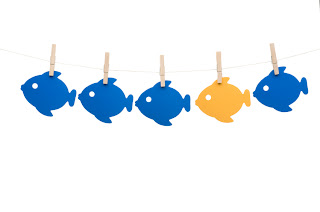 There was a great post on Mashable yesterday about ways to know when you should fire your social media consultant. I agree very much with the points Alex raised, but would also like to add a few of my own to the list.
There was a great post on Mashable yesterday about ways to know when you should fire your social media consultant. I agree very much with the points Alex raised, but would also like to add a few of my own to the list.They swim mostly in the fishbowl.
What I mean by this: some so-called social media gurus love to spend a lot of their time backslapping each other about how great they are. (Note to these folks: spending the bulk of your time pimping your blog on Twitter while not taking the time to engage on any of the comments on said blog does not qualify you as a social media "expert"). A good adviser of ANY kind needs to be taking in a strategic spectrum of expertise across industries and disciplines - of course with a focus on their area of expertise - in order to advise their clients in the most informed manner. You simply can't do that if you only spend time with your own "kind".
Jason Falls cautioned social media professionals yesterday about spending too much time in the bubble, and it's great advice. Make sure your consultant has offline expertise and the ability to understand the bigger business picture.
They tout social media as the only strategy.
I could probably retire if I had a penny for each time I had to explain that social media is NOT a replacement for sound corporate communication strategy overall. It is not a shortcut. It is but one piece of a larger picture, and it is not necessarily the right approach for every company. Yes, community and relationships are valuable no matter what the industry, and I believe companies should strive to build lasting relationships with their customers. But social media requires an investment of time and resources, and not all the tools are suited to any given company.
If your consultant is insisting that creating a page on Facebook or an account on Twitter is the answer to all your marketing problems, don't walk away. RUN.
They don't practice what they preach.
This is a biggie with me. Is your consultant building a relationship with YOU? Do they respond to emails, engage readers on their blog, seem like a community is something they enjoy being a part of? Ask them why they do what they do. Talk to passionate and dedicated people like Mack Collier, Jason Falls, Connie Reece, Liz Strauss, or Geoff Livingston, and see how much the conversation truly matters to them. They're shining examples of what it means to walk the walk, and I learn from all of them, every day.
I can't speak for everyone else, but social media is a passion for me because I believe that relationships are the cornerstone of truly great businesses. How those relationships are cultivated is different for everyone, but you have to love the philosophy in order to apply it well. Social media is a powerful and dynamic set of tools, but the underlying premise of building stronger and more fruitful communities should be the undercurrent of why you're using them.









